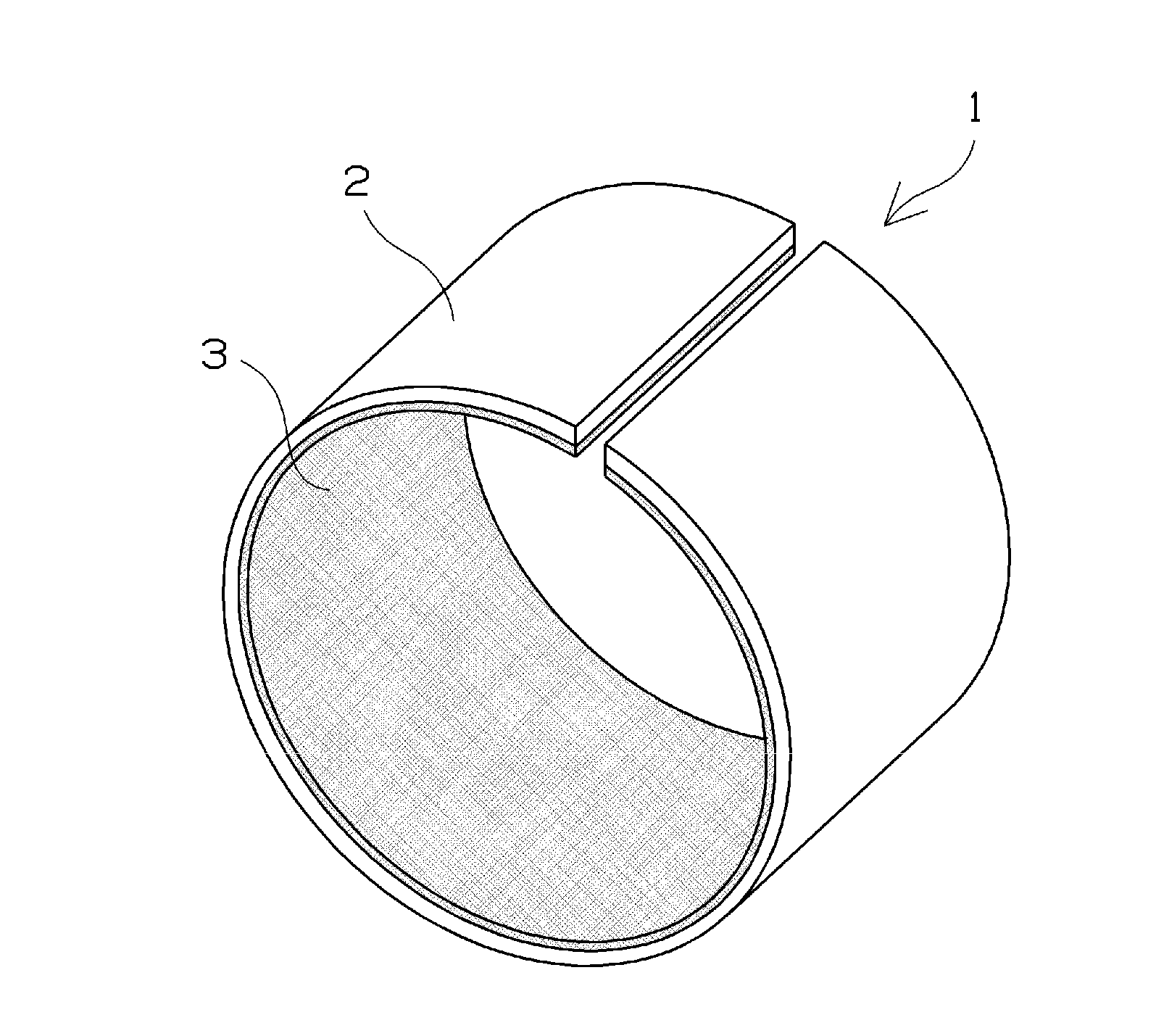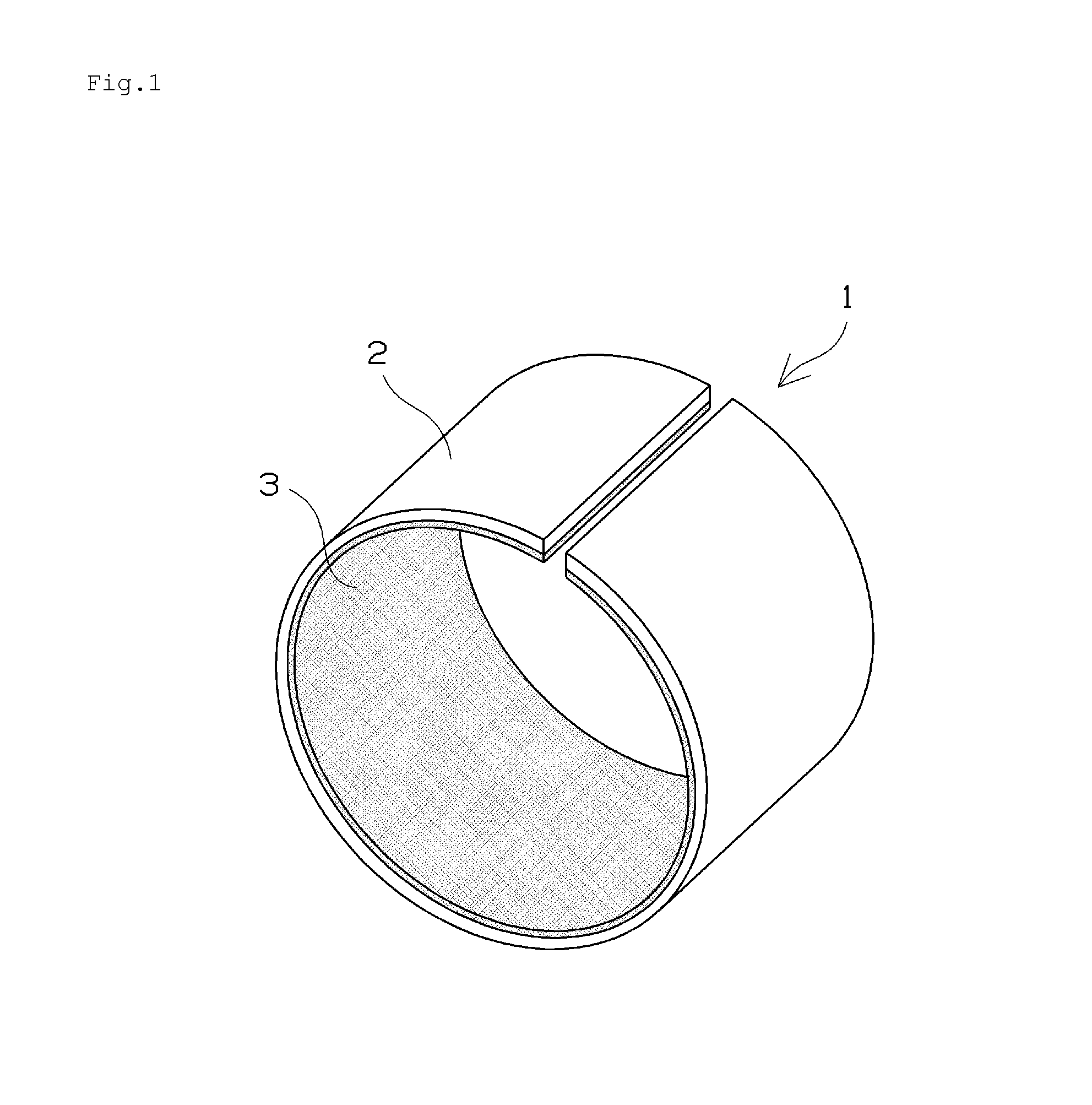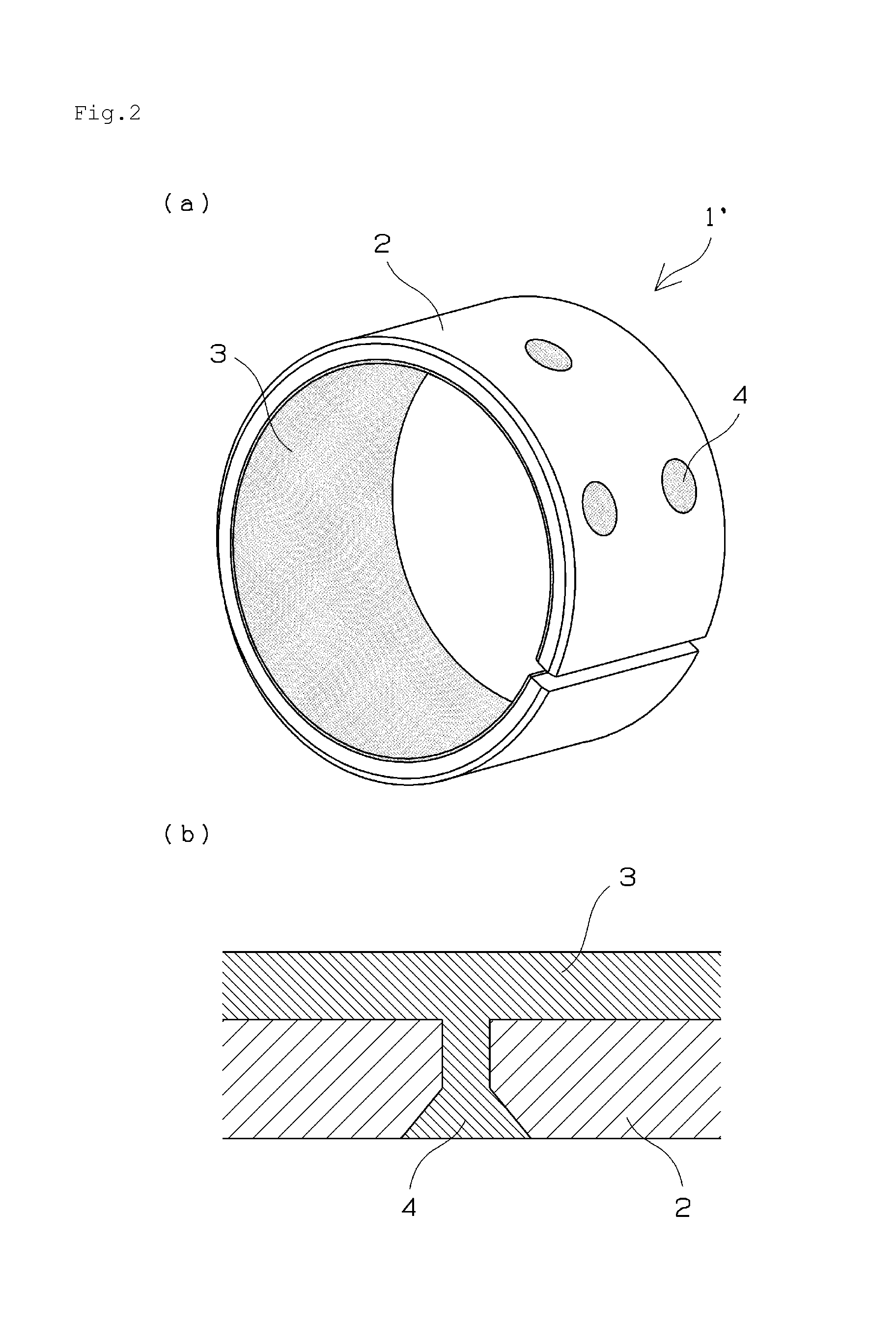Composite plain bearing, cradle guide, and sliding nut
a technology of sliding nut and bearing, which is applied in the direction of gearing, positive displacement liquid engine, hoisting equipment, etc., can solve the problems of poor creep resistance of ptfe resin, insufficient load-bearing capacity and heat resistance, and low friction resistance of sintered materials, etc., to achieve excellent heat resistance, low deformation amount, and low friction resistance.
- Summary
- Abstract
- Description
- Claims
- Application Information
AI Technical Summary
Benefits of technology
Problems solved by technology
Method used
Image
Examples
examples
[0277]Examples of the composite plain bearing of the present invention are described below.
examples a1 to a21
, Comparative Examples A1 to A2, Reference Examples A1 to A6
[0278]The ingot metal plates used in these examples, comparative examples, and reference examples are summarized in Table 1. The ingot metal plate B was provided with 11 round countersunk screw-shaped physical securing parts having a diameter of φ2 mm (FIG. 2(b)). In Table 1, the acid processing (nitric acid) was carried out by immersing the ingot metal plate in an aqueous solution of 20% nitric acid at room temperature (about 20 to 30° C.) for 30 seconds to one minute. The alkali treatment (sodium hydroxide) was carried out by immersing the ingot metal plate in an aqueous solution of 25% sodium hydroxide at room temperature (about 20 to 30° C.) for 30 seconds to one minute. The AMALPHA treatment was carried out by immersion for one to five minutes at room temperature (about 20 to 30° C.). NMT treatment was carried out by immersion for five minutes at a temperature of 75° C. TRI treatment was carried out by immersion and en...
examples b1 to b4
[0295]An ingot metal plate (press punched, φ18 mm×2 m) made of SPCC was used as the ingot metal member. The pretreatments shown in Table 9 were carried out on the face ingot metal plate to be joined with the resin layer. The “acid solution treatment” in Table 9 was carried out by immersing the ingot metal plate in an aqueous solution of 20% nitric acid at room temperature (about 20 to 30° C.) for 30 seconds to one minute. Degreasing was carried out prior to treatment, and washing and drying were carried out after the treatment. “Sintered metal layer” in Table 9 entailed plating copper over the entire surface of the ingot metal plate, thereafter dispersing a bronze powder (Cu—Sn) on the plate surface, and heating and pressurizing the metal plate having the uniformly dispersed bronze powder to thereby form a sintered metal layer.
[0296]A resin layer was insert molded using these pellets to a thickness of 0.5 mm on this surface to fabricate test pieces as cradle guides. The resin temper...
PUM
| Property | Measurement | Unit |
|---|---|---|
| Temperature | aaaaa | aaaaa |
| Length | aaaaa | aaaaa |
| Thickness | aaaaa | aaaaa |
Abstract
Description
Claims
Application Information
 Login to View More
Login to View More - R&D
- Intellectual Property
- Life Sciences
- Materials
- Tech Scout
- Unparalleled Data Quality
- Higher Quality Content
- 60% Fewer Hallucinations
Browse by: Latest US Patents, China's latest patents, Technical Efficacy Thesaurus, Application Domain, Technology Topic, Popular Technical Reports.
© 2025 PatSnap. All rights reserved.Legal|Privacy policy|Modern Slavery Act Transparency Statement|Sitemap|About US| Contact US: help@patsnap.com



